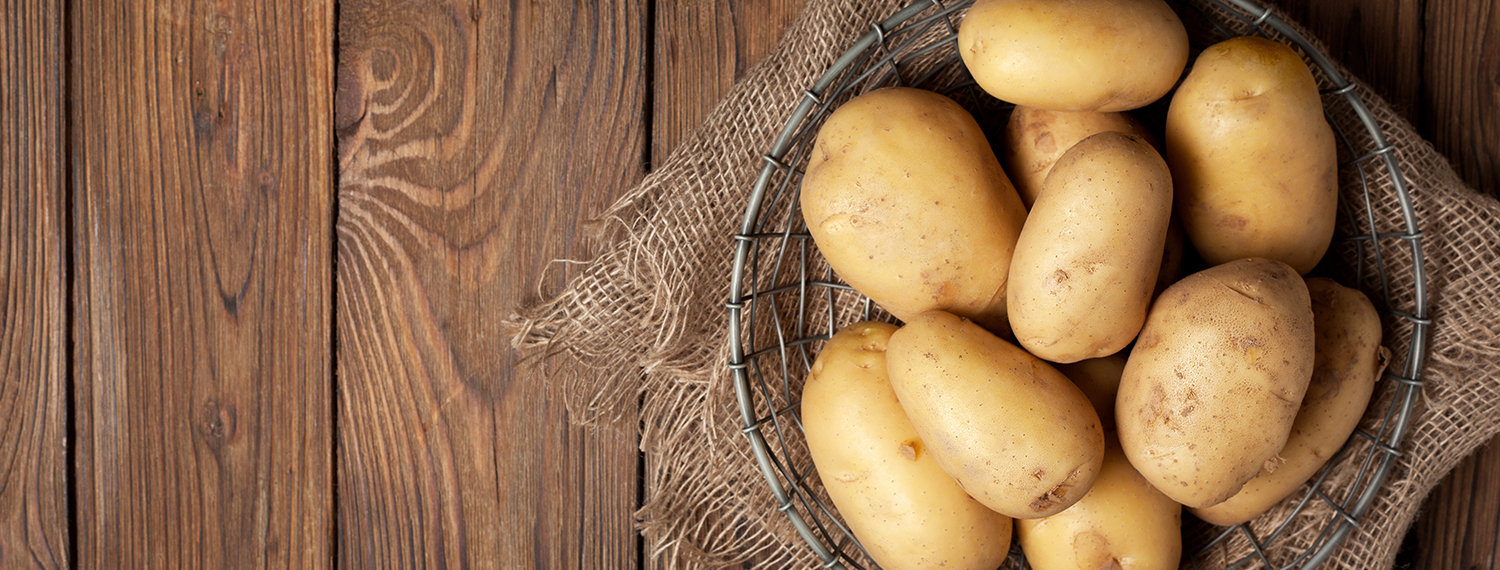“What I say is that, if a man really likes potatoes, he must be a pretty decent sort of fellow.”
~A.A. Milne
The ultimate comfort food, potatoes are one of the most beloved (and most produced) foods on the planet.
Today, we will discover a lot more about the humble, healthful potato.
All About the Potato
The potato is popular for a host of reasons: it is relatively cheap to grow, available all year round, and is rich in nutrients.
About 100 varieties of edible potatoes exist, and they come in an array of sizes, shapes, colors, flavors and starch content.
Potatoes are classified as either ‘mature’ or ‘new.’ New potatoes are harvested before they are fully grown and, therefore, are much smaller than a normal-sized potato.
No matter how the potato is cooked—mashed, baked or boiled—millions associate the potato with ‘comfort.’ The potato’s scientific name, Solanum tuberosum, gives the nod to this idea; the word Solanum means ‘soothing.’
The Potato and Its History
Potatoes originated in the Andean mountain region of South America where historians believe they have been cultivated for at least 7000 years. They were one of the few foods that could survive the rugged conditions of this isolated area.
The Spanish brought the potato to Europe in the early 16th century although, initially, it was not widely consumed.
The European people were suspicious of the potato and believed it was potentially poisonous or could cause a host of illnesses including leprosy.
Eventually, European farmers discovered that potatoes were much easier to grow than other popular staple crops like wheat or oats. Equally, they found that vitamin-rich potatoes were efficient; each acre of potatoes cultivated could provide sustenance for almost 10 people!
Potatoes’ popularity was greatly aided by Antoine-Augustin Parmentier. A pharmacist by training, Parmentier was imprisoned during the Seven Years’ War and forced to eat only potatoes during his time in prison. Surprised that he emerged from his potato-only diet in shining health, he became the potato’s greatest spokesperson.
He launched a de facto potato public relations blitz, organizing an all-potato dinner for high-society guests. In fact, Thomas Jefferson, who attended the meal, was so delighted that he brought the ‘French fry’ back with him to America.
Parmentier also persuaded Marie Antoinette to wear potato blossoms in her hair (and her husband Louis XVI to put them in his buttonhole) which meant that the French aristocracy followed suit and started to adorn their clothes with potato plants too. Finally, he purposefully planted acres and acres of potatoes near Paris so that the starving peasants would steal them.
By the end of the 18th century, potatoes had become a staple. Around 40 percent of the Irish ate potatoes as their only solid food. That number was somewhere between 10 to 30 percent in places like the Netherlands and Belgium.
In the summer of 1845, a potato blight destroyed crops throughout Europe virtually overnight. The hardest hit was Ireland, where millions died of hunger and millions more came to the New World to escape the famine.
America was the last country to adopt the potato in its cuisine; for many years they regarded this food to be suitable only for horses and other animals.
Apparently, the US has made up for lost time.
In America today, we grow 17.1 million tons of potatoes and eat as much as 126 pounds per person per year.
How to Store Potatoes
Here are some guidelines on how to store a potato:
- Keep potatoes in a dark, dry, cool place, around 45-50°F (7-10°C). Higher temperatures (even room temperature) can cause potatoes to sprout and dehydrate.
- Potatoes should be stored outside the refrigerator, or else their starch content will turn to sugar, making them taste bad.
- Avoid putting potatoes near onions because the gases they emit will cause damage to both.
- Place potatoes in either a burlap or paper bag when storing them.
- Keep potatoes out of the sunlight. Sun exposure can form solanine, which is toxic and will make them turn green.
When stored properly, mature potatoes can keep up to two months. New potatoes spoil much faster and will only last for about a week.
Potatoes are rich in antioxidants and fiber. They are also a good source of a variety of vitamins and minerals including vitamins C and B6, potassium, copper, manganese, phosphorus and niacin.
They are a great addition to a plant-based diet, provided you are careful about how you prepare them, so enjoy potatoes in as many healthy forms as possible!


